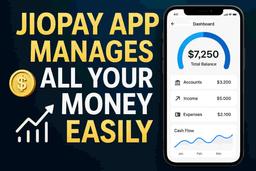Choosing the right home loan interest rate is crucial for significant financial goals. This guide explains fixed-rate loans for predictable EMIs, floating-rate loans that track market benchmarks like the repo rate, and hybrid loans that combine fixed for an initial period and then switch to floating. Understanding these options helps align your loan with your financial goals and comfort level.
Owning a home is a major financial milestone for many Indians, and home loans are a common path to achieve it. The interest rate structure significantly impacts the overall cost of borrowing.
Fixed Rate Home Loans: These loans offer a consistent EMI for a set period, providing financial predictability. This stability is especially beneficial for first-time homebuyers trying to manage their budgets.
Floating Rate Home Loans: The interest rate for these loans is tied to a benchmark, such as the repo rate (for banks) or a lender’s internal reference rate (for Housing Finance Companies or HFCs). When the benchmark rate falls, your loan interest rate and EMIs also decrease, offering potential savings during favourable market conditions.
Hybrid Home Loan Structure: This structure offers a blend of stability and flexibility. The interest rate remains fixed for an initial period (e.g., two to three years), ensuring predictable EMIs. After this period, the loan converts to a floating rate, allowing borrowers to benefit from potential rate reductions in the market. This approach balances immediate repayment certainty with long-term flexibility.
Example: Bajaj Housing Finance Dual Interest Rate Home Loan: This product exemplifies a hybrid structure. It offers a fixed rate for the first three years, aiding in initial financial planning with predictable EMIs. Post this period, it shifts to a floating rate linked to the company’s reference rate. An added advantage is the option to prepay without penalty during the fixed period using personal funds.
Why Hybrid Loans Stand Out: In the current environment of relatively low interest rates, hybrid loans are particularly attractive. They allow borrowers to lock in a favourable rate initially and then benefit from market fluctuations later, offering a hedge against immediate volatility.
Choosing the Right Option: The best choice depends on individual financial outlook. A fixed rate suits those preferring predictability, while a floating rate may offer more savings over time for those comfortable with market changes. A hybrid loan offers a balance for those wanting initial stability with future flexibility.
Impact:
This news provides crucial educational information for prospective homebuyers in India. It helps them make informed decisions about their home loan interest rates, directly affecting their financial planning and borrowing costs. The impact is on individual borrowers and the broader home loan market, but not directly on stock prices as it's educational content. Rating: 4/10




